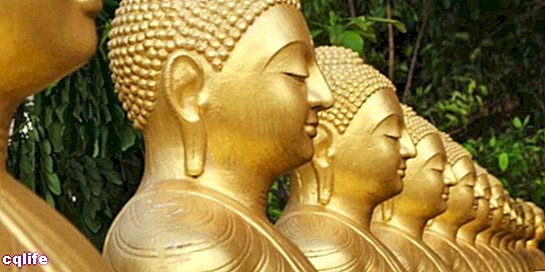We explain what death is, its biological function and cultural meaning. Also, the conceptions about what happens after death.

What is death?
Death is the end of the life, or its interruption, or the opposite of life, depending on how you see it. It is something inevitable, that Humans we have in common with absolutely all forms of life, although each has its own lapses of existence. However, only human beings are aware that, one day, we will die.
Death is the final experience of all organisms living, although it can occur earlier or later. Sometimes it is due to vital accidents (encounters with predators, participation in natural disasters) and in others to simply illness and wear and tear.
It is so universal that we take it for metaphor also of the end of things: the death of an empire, the death of civilization, the death of Sun. Death, seen like this, is nothing other than the end, the end.
Although it may seem easy to differentiate between life and death, that dividing line is not always clear. In fact, the starting point of death sparks debate among physicians, philosophers, and scientists alike. Is someone who is submerged in an eternal coma dead? Is someone whose heart stops for a few moments on an operating table is dead? When exactly does death begin?
Importance of death
Death is something extremely natural. If death were not inevitable, organisms would be subjected to a competence fierce for resources, or maybe there wouldn't even be life at all. From a scientific point of view, life is a self-sustaining point of equilibrium in which creatures are maintained as long as they are able to take from the environment what they need for it.
Death is rising entropy or the gradient of disorder within living systems. Eventually, the disorder grows, and the system collapses. It occurs in all thermodynamic systems that physical is able to describe, and it also happens with living beings: eventually, they decay and die, and return to the cycle of nature all the chemical energy and the matter that was accumulated in their bodies.
A large predator will eventually die too, handing over its wild, fibrous body to the most primitive forms of life, which will take care of breaking it down and recycling its biochemical components. Thus, death allows the circulation of matter and energy in the natural cycle.
Although the prospect of future death can be a source of melancholy, anguish or sadness, it is also true that, without it, life would be meaningless, as it would have no limits, and everything that happens in it would be the same to us.
It is what many stories of vampires and other immortal beings try to relate: without the future presence of death, life can become an agony, in an infinite desert of weather, and therefore the motivations the same ones that make us love life.
The meaning of death

Death has been a source of anxiety and a source of imagination alike. The consciousness of death, which the philosophers call "tragic consciousness", has provided since ancient times the most diverse explanations regarding why we die, what happens when we die or why we came to the world, if in the end we are going to die.
In fact, the awareness of future death is considered part of the maturation of the human psyche: all young people feel immortal.
Death is often depicted under mysterious figures, such as light or dark angels, beautiful but terrible women, and hourglasses about to run out. The most common image is a human skull or skeleton, sometimes wrapped in a black cloak and with a scythe (with which he would supposedly reap the recently deceased souls, to take them to the "other world").
This image is a reason for veneration and worship in many traditions cultural, such as Catrinas in Mexico, popular during the Day of the Dead celebration, or Saint Death in others nations Hispanic Americans.
The idea of death, on the other hand, is symbolically associated with change. This is the meaning, for example, that the Death card has in the Tarot, and dreams of death are often interpreted in that same sense. Death inspires rites and commemorations, some of a national nature, others religious and above all family, depending on who the deceased is.
Death has also inspired numerous artistic, literary and cultural representations, such as the Phaedrus of Plato (c. 427-347 BC), and the paintings The triumph of death from the Flemish Pieter Brueghel, “the Elder” (1525-1569); or also Self portrait with death by the Swiss Arnold Böcklin (1827-1901), to name just a few examples. Its presence can be traced throughout human civilization.
What is there after death?

This is the big question that no one has found a scientific answer to. That is, no one who has experienced death can "return" to tell us what it is, and those of us who witness it from "outside" simply see the cessation of vital functions, the loss of consciousness (if any) and the slow but unstoppable decomposition of the body.
The religions They try to give him an explanation for death, and at the same time in some consolation, something that allows us to live life in peace, knowing that death is simply unpredictable and inevitable. In fact, some of the answers regarding the main mystical or paranormal traditions are:
- According to the monotheistic tradition. Shared by the religions of Christianity, Judaism, and IslamDeath is the instant of separation of the body and the soul, the first being perishable and ephemeral, but the second being eternal and elevated. However, these religions also share the idea that souls, stripped of the body, will be subjected to judgment by God, who will evaluate whether they are worthy of eternal salvation, described in very different ways as a space of grace and fullness with God. ; or of eternal punishment, and therefore of hell, where they will be subjected to sufferings to compensate for the evil they did in their passage through the Earth. The criteria by which souls should be judged, however, vary from one religion to another and even from one church to another, within the sects of the same religion.
- According to the Buddhist tradition. Also called Vedic, life would be a wheel of reincarnations in which it is constantly turning, although not necessarily in human form: those who live their lives in a profane and brutal way, would descend on the ladder of life, incarnating in creatures each. more and more basic; But those who pursue enlightenment and seek to transcend their emotional limitations, detaching themselves from the world and their worldly appetites, will rise on the wheel until they reach nirvana, the state of grace reached by the Buddha, and will be able to escape the eternal repetition of sufferings. vital.
- According to the religious tradition of the Classic Greece. The souls of the deceased traveled to the Underworld, also called Hades, a place where they were mere walking shadows on a journey to reincarnation, known to the Greeks as the "Transmigration of souls." In the underworld, souls could drink the waters of Lethe or Lethe, the river of oblivion, and leave their past life behind, and then be reborn as another. person.
- According to speculation of the paranormal. There would be a "world of the dead" to which all mortals are going to give, but in which some could rest in peace and let go of their past life, and others would instead cling to it, tormented by a violent or premature death, or for an irrepressible love for a person still living. And that's how ghosts, ghosts or apparitions, also known as "banshee souls," would be born.
